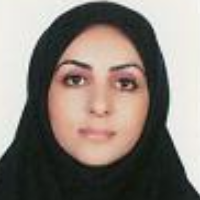Study of the Structural Elements of the Painting of the Great Dervish Curtain of the Qajar Period based on the Historiography of the Old and the New Sections in the Astan Quds Museum
Author(s):
Article Type:
Research/Original Article (دارای رتبه معتبر)
Abstract:
Dervish curtain is a painting that deals with the events of Ashura and is different from a coffee house painting. The Dervish curtains were very large and were prepared for the official mourning of the Shah. One of the best examples of a dervish curtain is in the Astan Quds Razavi Museum. This painting has two parts and it is mentioned as the biggest curtain painting in Iran, and has not been researched yet. The right part of the painting has very accurate coloring, composition and design features, but the left part of the painting was later added and has paintings, engraving and coloring of lower quality and visual value. This painting has been worked on in the old part based on the official Qajar painting criteria, viewing angle, symbolic language, axial movement of the figures, geometric ratios, image realism, multifaceted view, coloring, humanistic elements, animal and plant elements, which are not seen in the subsequently added new part. The assumption of this research is the study of the structural elements and visual features of this painting and the comparison of both the old and the new parts in the painting. In this regard, the present study seeks to answer these two basic questions of what visual features and structural elements have been used in the Great Dervish Curtain? What is the difference between structural and visual features in the old and the new parts of the work? The content of the present study is qualitative and based on the analysis of structural elements in painting. This painting is based on descriptive-analytical methodology and library data collection method. The results indicate that the main and old part of the painting was worked by court painters and has the feature of Qajar official figurative painting, while the other part is newer, and having been later added to the work, displays a lower image quality compared to the older part.The qualities are lower. Analysis and evaluation of visual elements and structural features, including design, coloring, geometry, perspective, and the viewing angle of this painting show that it has a different structure in the old and the new sections, and the old section has a higher image quality. These include the focus point of the image, which in the old part has a movement mode in the whole image, but in the new part is unclear. Analytical geometry in the old part of the image is in the form of three main triangles based on the main figures of the image, but in the new part there is no specific geometry. The center of the image in the old part is Imam Hussein's blessed head, but in the new part, a focal point is not seen in the picture. In the old part, each narration is separated by a Qajar angel, but in the new part, this separation is not seen in the picture, however it is seen very clumsily with a few flowers, which are clear from under the color of the painting due to the erasure of the painting. In the old part, the view is multifaceted, but in the new part, the view can be seen from the side. In the old part, the color of the image is very clear, bright, symbolic and epic, while in the new part, it is dark and used inadvertently without distance and quality. The design of human figures, the composition and the large volume of figures in the old part of the image are brilliant and unique, but in the new part, these figures are very scattered, without a clear composition. The design of the horse is very strong in the old part, but in the new part, it is very common. In the old part of the angels, the clothes of the angels, and the decorations of the clothes depict the effects of the court painting of the early Qajar period, but in the old part, these rules do not exist. Before painting, the second painter probably "carved parts of the painting, added elements, such as flowers, to the picture, and tried to connect both parts. The inscription is around the picture with the poems of Mohtasham Kashani about the event of Karbala has been coordinated and the writings of Mohtasham's calligraphy are clear from the picture due to the erasure of the color. This is one of the reasons why this part of the painting was later added. Both parts of the painting were characterized by a symbolic language, viewing angle, axial movement of the figures, geometric ratios, visual realism, multifaceted vision, coloring, human, animal, and plant elements, while the old part has a higher quality and the new section, which was later added to the original painting, is of a lower quality.
Keywords:
Language:
Persian
Published:
Negareh journal, Volume:16 Issue: 59, 2022
Pages:
43 to 59
https://magiran.com/p2392137
مقالات دیگری از این نویسنده (گان)
-
Stylistic analysis of the painting of Sheikh Sanan and Dokhtar tarsa in the Haft Tanan roofed hall of Shiraz
الهه Panjehbashi *, Atefe Takrar
Journal of Negarineh Islamic Art,



